heuristic optimization methods in power and energy systems Lee Kwang Y.
Visit to download the full and correct content document: https://ebookmass.com/product/applications-of-modern-heuristic-optimization-method s-in-power-and-energy-systems-lee-kwang-y/

More products digital (pdf, epub, mobi) instant download maybe you interests ...
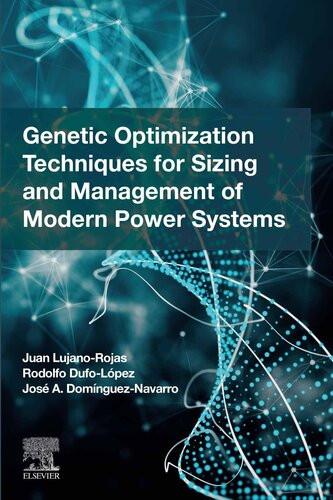
Genetic Optimization Techniques for Sizing and Management of Modern Power Systems Juan Miguel Lujano Rojas
https://ebookmass.com/product/genetic-optimization-techniquesfor-sizing-and-management-of-modern-power-systems-juan-miguellujano-rojas/
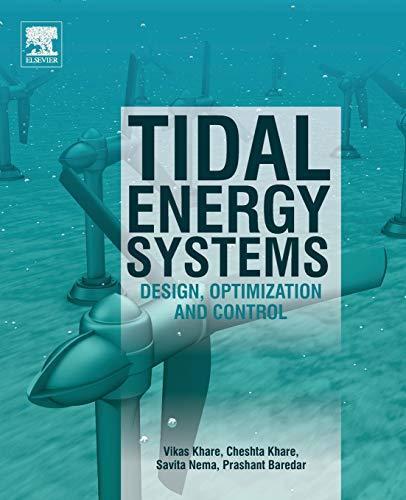
Tidal Energy Systems: Design, Optimization and Control 1st Edition
https://ebookmass.com/product/tidal-energy-systems-designoptimization-and-control-1st-edition/

Intelligent Data Mining and Analysis in Power and Energy Systems : Models and Applications for Smarter Efficient Power Systems 1st Edition Zita A. Vale
https://ebookmass.com/product/intelligent-data-mining-andanalysis-in-power-and-energy-systems-models-and-applications-forsmarter-efficient-power-systems-1st-edition-zita-a-vale/
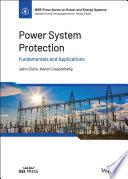
Power System Protection: Fundamentals and Applications (IEEE Press Series on Power and Energy Systems) 1st Edition Ciufo
https://ebookmass.com/product/power-system-protectionfundamentals-and-applications-ieee-press-series-on-power-andenergy-systems-1st-edition-ciufo/

Tidal Energy Systems: Design, Optimization and Control
Vikas Khare
https://ebookmass.com/product/tidal-energy-systems-designoptimization-and-control-vikas-khare/
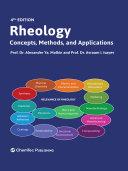
Rheology: Concepts, Methods, and Applications Alexander Y. Malkin
https://ebookmass.com/product/rheology-concepts-methods-andapplications-alexander-y-malkin/
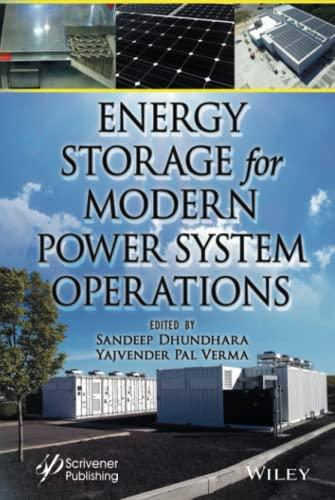
Energy Storage for Modern Power System Operations
Sandeep Dhundhara
https://ebookmass.com/product/energy-storage-for-modern-powersystem-operations-sandeep-dhundhara/

Simulation and optimization in process engineering : the benefit of mathematical methods in applications of the chemical industry 1st Edition Michael Bortz
https://ebookmass.com/product/simulation-and-optimization-inprocess-engineering-the-benefit-of-mathematical-methods-inapplications-of-the-chemical-industry-1st-edition-michael-bortz/
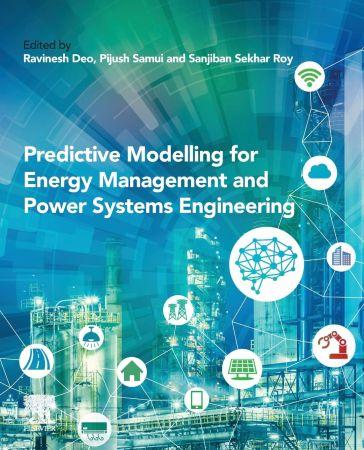
Predictive Modelling for Energy Management and Power Systems Engineering Ravinesh Deo
https://ebookmass.com/product/predictive-modelling-for-energymanagement-and-power-systems-engineering-ravinesh-deo/
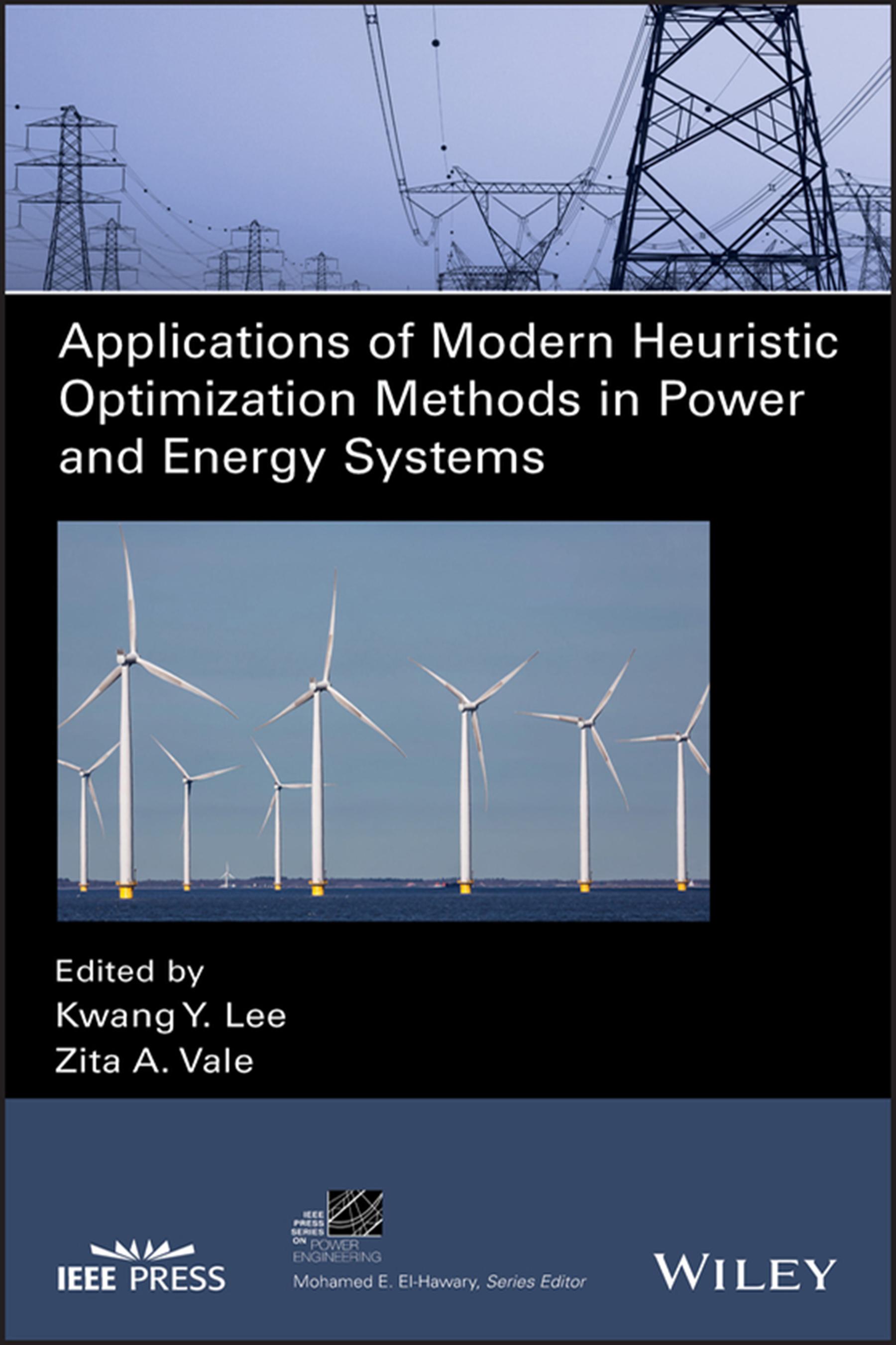
IEEEPress
445HoesLane
Piscataway,NJ08854
IEEEPressEditorialBoard EkramHossain, EditorinChief
JónAtliBenediktssonXiaoouLiJeffreyReed BimalBosePeterLianDiomidisSpinellis DavidAlanGrierAndreasMolischSarahSpurgeon ElyaB.JoffeSaeidNahavandiAhmetMuratTekalp
APPLICATIONSOF MODERNHEURISTIC OPTIMIZATION METHODSINPOWER ANDENERGY SYSTEMS
Editedby KWANGY.LEE
ZITAA.VALE
Copyright©2020byTheInstituteofElectricalandElectronicsEngineers,Inc.Allrightsreserved.
PublishedbyJohnWiley&Sons,Inc.,Hoboken,NewJersey.
PublishedsimultaneouslyinCanada.
Nopartofthispublicationmaybereproduced,storedinaretrievalsystem,ortransmittedinanyformor byanymeans,electronic,mechanical,photocopying,recording,scanning,orotherwise,exceptas permittedunderSection107or108ofthe1976UnitedStatesCopyrightAct,withouteithertheprior writtenpermissionofthePublisher,orauthorizationthroughpaymentoftheappropriateper-copyfee totheCopyrightClearanceCenter,Inc.,222RosewoodDrive,Danvers,MA01923,(978)750-8400, fax(978)750-4470,oronthewebatwww.copyright.com.RequeststothePublisherforpermission shouldbeaddressedtothePermissionsDepartment,JohnWiley&Sons,Inc.,111RiverStreet, Hoboken,NJ07030,(201)748-6011,fax(201)748-6008,oronlineathttp://www.wiley.com/go/ permissions.
LimitofLiability/DisclaimerofWarranty:Whilethepublisherandauthorhaveusedtheirbesteffortsin preparingthisbook,theymakenorepresentationsorwarrantieswithrespecttotheaccuracyor completenessofthecontentsofthisbookandspecificallydisclaimanyimpliedwarrantiesof merchantabilityorfitnessforaparticularpurpose.Nowarrantymaybecreatedorextendedbysales representativesorwrittensalesmaterials.Theadviceandstrategiescontainedhereinmaynotbesuitable foryoursituation.Youshouldconsultwithaprofessionalwhereappropriate.Neitherthepublisher norauthorshallbeliableforanylossofprofitoranyothercommercialdamages,includingbutnot limitedtospecial,incidental,consequential,orotherdamages.
Forgeneralinformationonourotherproductsandservicesorfortechnicalsupport,pleasecontactour CustomerCareDepartmentwithintheUnitedStatesat(800)762-2974,outsidetheUnitedStatesat (317)572-3993orfax(317)572-4002.
Wileyalsopublishesitsbooksinavarietyofelectronicformats.Somecontentthatappearsinprint maynotbeavailableinelectronicformats.FormoreinformationaboutWileyproducts,visitour websiteatwww.wiley.com.
LibraryofCongressCataloging-in-Publicationdataisappliedfor hardback:9781119602293
CoverDesign:Wiley
CoverImages:Electricitypylons©SamRobinson/GettyImages, Offshorefarm©T.W.vanUrk/Shutterstock
Setin10/12ptTimesbySPiGlobal,Pondicherry,India
PrintedintheUnitedStatesofAmerica 10987654321
DISCLAIMER
TheEditorsarenotendorsingevolutionasascientificfact,inthatspeciesevolve fromonekindtoanother.Theterm “evolutionary” intheevolutionarycomputation (EC)simplymeansthatthecharacteristicsofanindividualchangeswithinthe populationofthesamespecies,asobservedinthenature.
PREFACE
CONTRIBUTORS
LISTOFFIGURES
LISTOFTABLES xxxiii
CHAPTER1 INTRODUCTION 1
1.1Background 1
1.2EvolutionaryComputation:ASuccessfulBranchofCI 3
1.2.1GeneticAlgorithm 6
1.2.2Non-dominatedSortingGeneticAlgorithmII 8
1.2.3EvolutionStrategiesandEvolutionaryProgramming 8
1.2.4SimulatedAnnealing 9
1.2.5ParticleSwarmOptimization 10
1.2.6QuantumParticleSwarmOptimization 10
1.2.7Multi-objectiveParticleSwarmOptimization 11
1.2.8ParticleSwarmOptimizationVariants 12
1.2.9ArtificialBeeColony 13
1.2.10TabuSearch 14 References 15
CHAPTER2 OVERVIEWOFAPPLICATIONSINPOWERANDENERGYSYSTEMS 21
2.1ApplicationstoPowerSystems 21
2.1.1UnitCommitment 23
2.1.2EconomicDispatch 24
2.1.3ForecastinginPowerSystems 25
2.1.4OtherApplicationsinPowerSystems 27
2.2SmartGridApplicationCompetitionSeries 28
2.2.1ProblemDescription 29
2.2.2BestAlgorithmsandRanks 30
2.2.3FurtherInformationandHowtoDownload 32 References 32
CHAPTER3 POWERSYSTEMPLANNINGANDOPERATION 39
3.1Introduction 39
3.2UnitCommitment 40
3.2.1Introduction 40
3.2.2ProblemFormulation 40
3.2.3AdvancementinUCPFormulationsandModels 42
3.2.4SolutionMethodologies,State-of-the-Art,History,andEvolution 46
3.2.5Conclusions 56
3.3EconomicDispatchBasedonGeneticAlgorithmsandParticleSwarm Optimization 56
3.3.1Introduction 56
3.3.2FundamentalsofGeneticAlgorithmsandParticleSwarmOptimization 58
3.3.3EconomicDispatchProblem 60
3.3.4GAImplementationtoED 63
3.3.5PSOImplementationtoED 71
3.3.6NumericalExample 79
3.3.7Conclusions 87
3.4DifferentialEvolutioninActivePowerMulti-ObjectiveOptimalDispatch 87
3.4.1Introduction 87
3.4.2DifferentialEvolutionforMulti-ObjectiveOptimization 88
3.4.3Multi-ObjectiveModelofActivePowerOptimizationforWindPower IntegratedSystems 97
3.4.4CaseStudies 100
3.4.5AnalysesofDispatchPlan 105
3.4.6Conclusions 106
3.5HydrothermalCoordination 106
3.5.1Introduction 106
3.5.2HydrothermalCoordinationFormulation 107
3.5.3ProblemDecomposition 110
3.5.4CaseStudies 111
3.5.5Conclusions 114
3.6Meta-HeuristicMethodforGmsBasedonGeneticAlgorithm 115
3.6.1History 115
3.6.2Meta-heuristicSearchMethod 116
3.6.3FlexibleGMS 119
3.6.4User-FriendlyGMSSystem 131
3.6.5Conclusion 141
3.7LoadFlow 143
3.7.1Introduction 143
3.7.2LoadFlowAnalysisinElectricalPowerSystems 144
3.7.3ParticleSwarmOptimizationandMutationOperation 148
3.7.4LoadFlowComputationviaParticleSwarmOptimizationwithMutation Operation 150
3.7.5NumericalResults 153
3.7.6Conclusions 160
3.8ArtificialBeeColonyAlgorithmforSolvingOptimalPowerFlow 161
3.8.1OptimizationinPowerSystemOperation 162
3.8.2TheOptimalPowerFlowProblem 162
3.8.3ArtificialBeeColony 166
3.8.4ABCfortheOPFProblem 168
3.8.5CaseStudies 170
3.8.6Conclusions 176
3.9OPFTestBedandPerformanceEvaluationofModernHeuristicOptimization 176
3.9.1Introduction 176
3.9.2ProblemDefinition 177
3.9.3OPFTestSystems 178
3.9.4DifferentialEvolutionaryParticleSwarmOptimization:DEEPSO 183
3.9.5EnhancedVersionofMean–VarianceMappingOptimizationAlgorithm: MVMO-PHM 187
3.9.6EvaluationResults 193
3.9.7Conclusions 196
3.10TransmissionSystemExpansionPlanning 197
3.10.1Introduction 197
3.10.2TransmissionSystemExpansionPlanningModels 198
3.10.3MathematicalModeling 199
3.10.4Challenges 201
3.10.5ApplicationofMeta-heuristicstoTEP 202
3.10.6Conclusions 210
3.11Conclusion 210 References 210
CHAPTER4 POWERSYSTEMANDPOWERPLANTCONTROL 227
4.1Introduction 227
4.2LoadFrequencyControl – OptimizationandStability 228
4.2.1Introduction 228
4.2.2LoadFrequencyControl 229
4.2.3ComponentsofActivePowerControlSystem 230
4.2.4DesigningLFCStructureforanInterconnectedPowerSystem 232
4.2.5ParameterOptimizationandSystemPerformance 237
4.2.6SystemStabilityinthePresenceofCommunicationDelay 242
4.2.7Conclusions 244
4.3ControlofFactsDevices 244
4.3.1Introduction 244
4.3.2RoleofFACTS 246
4.3.3StaticModelingofFACTSdevices 247
4.3.4PowerFlowControlusingFACTS 255
4.3.5OptimalPowerFlowUsingSuitabilityFACTSdevices 259
4.3.6UseofParticleSwarmOptimization 281
4.3.7Conclusions 283
4.4HybridofAnalyticalandHeuristicTechniquesforfactsDevices 284
4.4.1Introduction 284
4.4.2HeuristicAlgorithms 285
4.4.3SVCandVoltageInstabilityImprovement 288
4.4.4FACTSDevicesandAngleStabilityImprovement 293
4.4.5SelectionofSupplementaryInputSignalsforDampingInter-area Oscillations 295
4.4.6TCSCandImprovementofTotalTransferCapability 302
4.4.7Conclusions 305
4.5PowerSystemAutomation 305
4.5.1Introduction 305
4.5.2ApplicationofPSOonPowerSystem’sCorrectiveControl 307
4.5.3GeneticAlgorithm-aidedDTsforLoadShedding 322
4.5.4PowerSystem-ControlledIslanding 324
4.5.5ApplicationofthemethodontheIEEE – 30busestestsystem 326
4.5.6ApplicationofthemethodontheIEEE – 118busestestsystem 327
4.5.7Conclusions 327
4.5.8Appendix 328
4.6PowerPlantControl 334
4.6.1Introduction 334
4.6.2CoalMillModeling 335
4.6.3NonlinearModelPredictiveControlofReheaterSteamTemperature 340
4.6.4Multi-objectiveOptimizationofBoilerCombustionSystem 345
4.6.5Conclusions 355
4.7PredictiveControlinLarge-ScalePowerPlant 355
4.7.1Introduction 355
4.7.2ParticleSwarmOptimizationAlgorithm 356
4.7.3PerformancePredictionModelDevelopmentBasedonNARMAModel 357
4.7.4DesignofIntelligentMPOCScheme 361
4.7.5ControlSimulationTests 364
4.7.6Conclusions 367
4.8Conclusion 368 References 369
CHAPTER5 DISTRIBUTIONSYSTEM
5.1Introduction 381
5.2ActiveDistributionNetworkPlanning 382
5.2.1Introduction 382
5.2.2ProblemFormulation 382
5.2.3OverviewoftheSolutionTechniquesforDistributionNetwork Planning 385
5.2.4GeneticAlgorithmSolutiontoActiveDistributionNetworkPlanning Problem 385
5.2.5NumericalResults 388
5.2.6Conclusions 392
5.3OptimalSelectionofDistributionSystemArchitecture 392
5.3.1Introduction 392
5.3.2DeterministicOptimizationTechniques 393
5.3.3StochasticOptimizationTechniques 394
5.3.4Multi-ObjectiveOptimization 400
5.3.5MathematicalModelingforPowerSystemComponents 401
5.3.6AC/DCPowerFlowinHybridNetworks 405
5.3.7Pareto-BasedMulti-ObjectiveOptimizationProblem 409
5.4ConservationVoltageReductionPlanning 418
5.4.1Introduction 418
5.4.2ConservationVoltageReduction 418
5.4.3CVRBasedonPSO 420
5.4.4CVRBasedonAHP 423
5.4.5CaseStudiesforCVRinKoreanPowerSystem 424
5.4.6Conclusion 427
5.5DynamicDistributionNetworkExpansionPlanningwithDemandSide Management 427
5.5.1Introduction 427
5.5.2ExpansionOptions 431
5.5.3ProblemFormulation 436
5.5.4OptimizationAlgorithm 442
5.5.5CaseStudies 450
5.5.6Conclusions 460
5.6GA-GuidedTrust-TechMethodologyforCapacitorPlacementinDistribution Systems 467
5.6.1Introduction 467
5.6.2OverviewoftheTrust-TechMethod 469
5.6.3ComputingTier-OneLocalOptimalSolutions 472
5.6.4TheGA-GuidedTrust-TechMethod 474
5.6.5ApplicationstoCapacitorPlacementProblems 478
5.6.6NumericalStudy 481
5.6.7Conclusions 488
5.7NetworkReconfiguration 489
5.7.1Introduction 489
5.7.2ModernDistributionSystems:AConcept 490
5.7.3DistributionSystemReconfiguration 493
5.7.4DistributionSystemServiceRestoration 496
5.7.5Multi-AgentSystemforDistributionSystemReconfiguration 501
5.7.6Conclusions 510
5.8DistributionSystemRestoration 510
5.8.1Introduction 510
5.8.2PowerSystemRestorationProcess 511
5.9Group-basedPSOforSystemRestoration 531
5.9.1Introduction 531
5.9.2Group-BasedPSOMethod 533
5.9.3OverviewoftheServiceRestorationProblem 539
5.9.4ApplicationtotheServiceRestorationProblem 542
5.9.5NumericalResults 545
5.9.6Conclusions 552
5.10MVMOforParameterIdentificationofDynamicEquivalentsforActive DistributionNetworks 553
5.10.1Introduction 553
5.10.2ActiveDistributionSystem 553
5.10.3NeedforAggregationandtheConceptofDynamicEquivalents 554
5.10.4ProposedApproachwithMVMO 556
5.10.5AdaptationofMVMOforIdentificationProblem 558
5.10.6CaseStudy 562
5.10.7ApplicationtoTestCase 568
5.10.8Analysis 569
5.10.9Reflections 572
5.10.10Conclusions 572
5.11ParameterEstimationofCircuitModelforDistributionTransformers 573
5.11.1Introduction 573
5.11.2TransformerWindingEquivalentCircuit 574
5.11.3SignalComparisonIndicators 576
5.11.4CoefficientsEstimationUsingHeuristicOptimization 578
5.11.5CoefficientsEstimationResultsandConclusion 582
5.11.6Conclusions 586
References 590
CHAPTER6 INTEGRATIONOFRENEWABLEENERGYINSMARTGRID
6.1Introduction 613
6.2RenewableEnergySources 613
6.2.1RenewableEnergySourcesManagementOverview 613
6.2.2EnergyResourceScheduling – ProblemFormulation 615
6.2.3EnergyResourcesScheduling – ParticleSwarmOptimization 617
6.2.4EnergyResourcesScheduling – SimulatedAnnealing 618
6.2.5PracticalCaseStudy 621
6.2.6Appendix 632
6.2.7Conclusions 634
6.3OperationandControlofSmartGrid 635
6.3.1Introduction 635
6.3.2ProblemsforSystemsConfigurationorSystemsDesign 636
6.3.3SystemsOperationandSystemsControl 638
6.3.4System’sManagement 640
6.3.5Conclusion 645
6.4ComplianceofReactivePowerRequirementsinWindPowerPlants 645
6.4.1Introduction 645
6.4.2ProblemDefinition 646
6.4.3NN-BasedWindSpeedForecastingMethod 648
6.4.4MeanVarianceMappingOptimizationAlgorithm 650
6.4.5CaseStudies 654
6.4.6Conclusions 665
6.5PhotovoltaicControllerDesign 667
6.5.1Introduction 667
6.5.2MaximumPowerPointTrackinginPVSystem 668
6.5.3ParticleSwarmOptimization 674
6.5.4ApplicationofParticleSwarmOptimizationinMPPT 674
6.5.5IllustrationofPSOTechniqueforMPPTDuringDifferentIrradiance Conditions 676
6.5.6Conclusion 678
6.6DemandSideManagementandDemandResponse 680
6.6.1Introduction 680
613
6.6.2MethodologyforConsumptionShiftingandGenerationScheduling 683
6.6.3QuantumPSO 685
6.6.4NumericExample 687
6.6.5Conclusions 691
6.7EPSO-BasedSolarPowerForecasting 691
6.7.1Introduction 691
6.7.2GeneralRadialBasisFunctionNetwork 693
6.7.3 k-Means 695
6.7.4DeterministicAnnealingClustering 695
6.7.5EvolutionaryParticleSwarmOptimization 697
6.7.6HybridIntelligentMethod 698
6.7.7CaseStudies 699
6.7.8Conclusion 704
6.8LoadDemandandSolarGenerationForecastforPVIntegratedSmart Buildings 704
6.8.1Introduction 704
6.8.2LiteratureReviewofForecastingTechniques 714
6.8.3EnsembleForecastMethodologyforLoadDemandandPVOutput Power 717
6.8.4NumericalResultsandDiscussion 722
6.8.5Conclusions 728
6.9Multi-ObjectivePlanningofPublicElectricVehicleChargingStations 729
6.9.1Introduction 729
6.9.2Multi-ObjectiveElectricVehicleChargingStationLayoutPlanning Model 730
6.9.3AnImprovedSPEA2forSolvingEVCSLPProblem 733
6.9.4CaseStudy 737
6.9.5Conclusion 740
6.10DispatchModelingIncorporatingManeuverComponents,WindPower,andElectric Vehicles 741
6.10.1Introduction 741
6.10.2ProposedEconomicDispatchFormulation 743
6.10.3Population-BasedOptimizationAlgorithms 751
6.10.4TestSystemandResultsAnalysis 753
6.10.5Conclusion 756
6.11Conclusions 757 References 757
CHAPTER7 ELECTRICITYMARKETS
7.1Introduction 775
7.2BiddingStrategies 777
7.2.1Introduction 777
7.2.2ContextAnalysis 779
7.2.3StrategicBidding 780
7.3MarketAnalysisandClearing 781
7.3.1Introduction 781
7.3.2ElectricityMarketSimulators 782
7.3.3DidacticExample 785
7.4ElectricityMarketForecasting 793
7.4.1Introduction 793
775
7.4.2ArtificialNeuralNetworksforElectricityMarketPriceForecasting 794
7.4.3SupportVectorMachinesforElectricityMarketPriceForecasting 795
7.4.4IllustrativeResults 796
7.5SimultaneousBiddingofV2GInAncillaryServiceMarketsUsingFuzzy Optimization 798
7.5.1Introduction 798
7.5.2FuzzyOptimization 799
7.5.3FO-basedSimultaneousBiddingofAncillaryServicesUsingV2G 801
7.5.4CaseStudy 806
7.5.5ResultsandDiscussions 807
7.5.6Conclusion 811
7.6Conclusions 812
References 812 INDEX
PREFACE
Heuristicsearchandoptimizationisanewandmodernapproachforsolving complexproblemsthatovercomemanyshortcomingsoftraditionaloptimization techniques.Heuristicoptimizationtechniquesaregeneral-purposemethodsthat areveryflexibleandcanbeappliedtomanytypesofobjectivefunctionsandconstraints.Recently,thesenewheuristictoolshavebeencombinedamongthemselves,andnewmethodshaveemergedthatcombineelementsofnature-based methods,orwhichhavetheirfoundationinstochasticsandsimulationmethods. Developingsolutionswiththesetoolsofferstwomajoradvantages:development timeismuchshorterthanwhenusingmoretraditionalapproaches,andthe systemsareveryrobust,beingrelativelyinsensitivetonoisyand/ormissing data/informationknownasuncertainty.
Incompetitiveelectricitymarketalongwithautomation,heuristicoptimizationmethodsareveryuseful.Aselectricutilitiesaretryingtoprovidesmartsolutionswitheconomical,technical(secure,stable,andgoodpowerquality),and environmentalgoals,thereareseveralchallengingissuesinthesmartgridsolutions suchas,butnotlimitedto,forecastingofload,price,ancillaryservices;penetration ofnewandrenewableenergysources;biddingstrategiesofparticipants;power systemplanningandcontrol;operatingdecisionsundermissinginformation; increaseddistributedgenerationsanddemandresponseintheelectricmarket;tuningofcontrollerparametersinvaryingoperatingconditions,etc.Riskmanagement andfinancialmanagementintheelectricsectorareconcernedwithfindingan idealtrade-offbetweenmaximizingtheexpectedreturnsandminimizingtherisks associatedwiththeseinvestments.
Theobjectiveofthisbookistoreviewthestate-of-the-arttechnologiesin themodernheuristicoptimizationtechniquesandpresentcasestudieshowthese techniqueshavebeenappliedinthesecomplexpowerandenergysystemsproblems.Empathieswillbegiventoapplicationsratherthantheoryandtheorganizationofbookwillbeonapplicationbasisratherthantools.
Thebookiscomposedofsixchapters:Chapter 2 givesanoverviewof applicationsofevolutionarycomputationtechniquesinpowerandenergysystems, includingfundamentalsofgeneticalgorithms,evolutionaryprogrammingand strategies,simulatedannealing,particleswarmoptimization,artificialbeecolony searchalgorithm,andtabusearch.
Chapter 3 givesanoverviewoftheapplicationsinpowersystemplanning andoperationproblems,suchasunitcommitment,economicdispatch,active powermulti-objectiveoptimaldispatch,hydrothermalcoordination,maintenance
scheduling,loadflow,optimalpowerflow,transmissionsystemexpansionplanning,andOPFtestbedandperformanceevaluationofmodernheuristic optimizationtechniques.
Chapter 4 givesanoverviewoftheapplicationsinpowersystemandpower plantcontrolproblems,suchasvoltagecontrol,loadfrequencycontrolwithoptimizationandstability,controlofFACTSdevices,hybridofanalyticalandheuristic techniquesforFACTSdevices,powersystemautomation,powerplantcontrol, predictivecontrolinlarge-scalepowerplant,andindustrialpowerplantcontrol.
Chapter 5 givesanoverviewoftheapplicationsindistributionsystems,such asactivedistributionnetworkplanning,optimalselectionofdistributionsystem architecture,conservationvoltagereductionplanning,dynamicdistributionnetworkexpansionplanningwithdemandsidemanagement,capacitorplacement indistributionsystems,networkreconfiguration,distributionsystemrestoration, group-basedPSOforsystemrestoration,parameteridentificationofdynamic equivalentsfordistributionnetworks,andparameterestimationfordistribution transformers.
Chapter 6 givesanoverviewoftheapplicationsinintegrationofrenewable energyinsmartgrid,suchasrenewableenergysources,operationandcontrolof smartgrid,complianceofreactivepowerrequirementsinwindpowerplants,photovoltaiccontrollerdesign,demandsidemanagementanddemandresponse,solar powerforecasting,loaddemandandsolargenerationforecastforPVintegrated smartbuildings,multi-objectiveplanningofpublicelectricvehiclechargingstations,anddispatchmodelingincorporatingmaneuvercomponents,windpower, andelectricvehicles.
Chapter 7 givesanoverviewoftheapplicationsofmodernheuristicoptimizationtechniquesinelectricitymarkets,suchasbiddingstrategies,marketanalysis andclearingwithmarketsimulator,electricitymarketforecastingwithartificial neuralnetworksandsupportvectormachines,fuzzyoptimization(FO),and FO-basedsimultaneousbiddingofV2Ginancillaryservicemarkets.
CONTRIBUTORS
AliT.Al-Awami, KingFahdUniversityofPetroleum&Minerals,Dhahran, SaudiArabia
DavidL.Alvarez,UniversidadNacionaldeColombia,Bogotá,Colombia
AlexandreP.AlvesdaSilva,ValeS.A.,RiodeJaneiro,Brazil
KyungsungAn,SKTelecom,Seoul,Korea
EduardoN.Asada,UniversityofSãoPaulo,SãoCarlos,Brazil
WenleiBai,ABBEnterprisesSoftwareInc.Houston,TX,USA
JensC.Boemer,ElectricPowerResearchInstitute,Seattle,USA
LuizEduardoBorgesdaSilva,ItajubaFederalUniversity,Itajuba,MG,Brazil
PeterA.N.Bosman,CentrumWiskundeandInformatica,Amsterdam, TheNetherlands
LeonelCarvalho,INESCTEC,Porto,Portugal
Hsiao-DongChiang,CornellUniversity,Ithaca,NY,USA
JaeseokChoi,GyeongsangNationalUniversity,Jinju,Korea
JindaCui,LehighUniversity,Bethlehem,PA,USA
AnnaCarolinaR.H.daSilva,Eletrobras,RiodeJaneiro,Brazil IbrahimEke,KirikkaleUniversity,Kirikkale,Turkey
AhmedElsayed,FloridaInternationalUniversity,Miami,FL,USA
IstvánErlich,UniversityofDuisburg-Essen,Duisburg,Germany
PedroFaria,PolytechnicofPorto,Porto,Portugal
MaliheMaghfooriFarsangi,ShahidBahonarUniversityofKerman, Kerman,Iran
PavlosS.Georgilakis,NationalTechnicalUniversityofAthens(NTUA), Athens,Greece
MarinusO.W.Grond,CentrumWiskundeandInformatica,Amsterdam, TheNetherlands
DigvijayGusain,TUDelft,Delft,TheNetherlands
NikosD.Hatziargyriou,NationalTechnicalUniversityofAthens(NTUA), Athens,Greece
KyeonHur,YeonseiUniversity,Seoul,Korea
NikolaosC.Koutsoukis,NationalTechnicalUniversityofAthens(NTUA), Athens,Greece
GermanoLambert-Torres,GnarusInstitute,Itajuba,MG,Brazil
HanLaPoutré,CentrumWiskundeandInformatica,Amsterdam, TheNetherlands
KwangY.Lee,BaylorUniversity,Waco,TX,USA
YeonchanLee,GyeongsangNationalUniversity,Jinju,Korea
JoãoBoscoA.LondonJr,UniversityofSãoPaulo,SãoCarlos,Brazil
NgocHoangLuong,CentrumWiskundeandInformatica,Amsterdam, TheNetherlands
LiangyuMa,NorthChinaElectricPowerUniversity,Baoding,China
VladimiroMiranda,INESCTEC/UniversityofPorto,Porto,Portugal
SukumarMishra,IndianInstituteofTechnologyDelhi,NewDelhi,India
OsamaMohammed,FloridaInternationalUniversity,Miami,FL,USA
H.Morais,INESC-ID/UniversityofLisbon,Lisbon,Portugal
HiroyukiMori,MeijiUniversity,Nakano-city,Tokyo,Japan
MithulananthanNadarajah,TheUniversityofQueensland,Brisbane,Queensland,Australia
KoichiNara,IbarakiUniversity,Ibaraki,Japan
MarioNdreko,TenneTTSOGmbH,Bayreuth,Germany
HosseinNezamabadi-pour,ShahidBahonarUniversityofKerman,Kerman,Iran
NarayanaPrasadPadhy,IndianInstituteofTechnologyRoorkee,Roorkee, Uttarakhand,India
PeterPalensky,TUDelft,Delft,TheNetherlands
Jong-BaePark,KonkukUniversity,Seoul,Korea
TiagoPinto, PolytechnicofPorto,Porto,Portugal
DeepakPullaguram,NationalInstituteofTechnology,Warangal,Telangana,India
MuhammadQamarRaza,TheUniversityofQueensland,Brisbane,Queensland, Australia
SergioRivera,UniversidadNacionaldeColombia,Bogotá,Colombia
AndrésRomero,UniversidadNacionaldeSanJuan,SanJuan,Argentina
RubénRomero,SãoPauloStateUniversity,IlhaSolteira,SãoPaulo,Brazil
JoseRueda,TUDelft,Delft,TheNetherlands
CamilaPaesSalomon,ItajubaFederalUniversity,Itajuba,MG,Brazil
FilipeO.Saraiva,FederalUniversityofPará,Belém,Brazil
DushyantSharma,IndianInstituteofTechnologyJodhpur,Rajasthan,India
RuifengShi,NorthChinaElectricPowerUniversity,Beijing,China
SishajPulikottilSimon,NationalInstituteofTechnologyTiruchirappalli, Tamilnadu,India
S.N.Singh,MadanMohanMalaviyaUniversityofTechnology,Gorakhpur,India
JoãoSoares,PolytechnicofPorto,Porto,Portugal
AldirS.Souza,StateUniversityofPiauí,Teresina,Piauí,Brazil
T.Sousa,TechnicalUniversityofDenmark,Lyngby,Denmark WeiSun,UniversityofCentralFlorida,Orlando,FL,USA
MasatoTakahashi,FujiElectricCo.,Hino-city,Tokyo,Japan
Aimilia-MyrsiniTheologi,JedlixSmartCharging,Rotterdam,TheNetherlands
ZitaA.Vale,PolytechnicofPorto,Porto,Portugal
KumarVenayagamoorthy,ClemsonUniversity,Clemson,SC,USA
E.M.Voumvoulakis,NationalTechnicalUniversityofAthens(NTUA), Athens,Greece
ShuoWang,ChinaElectricPowerPlanning&EngineeringInstitute, Beijing,China
XiaoWu,SoutheastUniversity,Nanjing,China
ShuXia,NorthChinaElectricPowerUniversity,Beijing,China
TianshiXu,TianjinUniversity,Tianjin,PRC
Yong-FengZhang,UniversityofJinan,Jinan,China
MingZhou,NorthChinaElectricPowerUniversity,Beijing,China
QunZhou,UniversityofCentralFlorida,Orlando,FL,USA
LISTOFFIGURES
Figure1.1.1 PublicationsofCIinpowersystemsandsmartgrid (2002–2018). 2
Figure1.2.1 NumberofpublicationsbyECmethodsinpowersystems andsmartgrid. 4
Figure1.2.2 Geneticalgorithmprocessflowchart. 7
Figure1.2.3 Laggedparticlesandwaitingphenomenain(a)PSOand (b)QPSO. 11
Figure1.2.4 Multi-objectiveparticleswarmoptimizationflowchart. 12
Figure2.2.1 Overviewoftheaggregatorenergymanagementproblem. 31
Figure3.2.1 UCPsolutionpaths.
48
Figure3.2.2 UCPsolutionusingheuristicmethods. 49
Figure3.2.3 Initialgenerationofpopulation. 52
Figure3.2.4 ISOactivities. 55
Figure3.2.5 Co-ordinationbetweenISOandGENCO. 55
Figure3.3.1 Structureofsimplegeneticalgorithm.
Figure3.3.2 SearchmechanismofPSO.
Figure3.3.3 Piecewisequadraticcostfunctionofagenerator.
Figure3.3.4 Costfunctionwithfivevalves.
59
60
61
62
Figure3.3.5 Aunitwithprohibitedoperatingzone. 62
Figure3.3.6 Encodingschemes.(a)Seriesencodingand(b)embedded encoding. 63
Figure3.3.7 Pseudocodeforthenewcrossovertechnique.
Figure3.3.8 PseudocodeforthedeterministiccrowdingGA.
66
67
Figure3.3.9 Artificialimmunegeneticalgorithmflowchart. 68
Figure3.3.10 FlowchartofthegeneticalgorithmbasedontheLagrange method. 69
Figure3.3.11 Adjustmentstrategyforanindividual’spositionwithin boundary. 72
Figure3.3.12 ComparisonofinertiaweightsforIWAandCIWA.
Figure3.3.13 ConvergencecharacteristicsoftheCSPSO.
74
74
Figure3.3.14 PSOwithpenaltyforGworstsearchmechanism. 75
Figure3.3.15 Schematicofdynamicspacereductionstrategy.
78
Figure3.4.1 Solutiondistributionbydifferentselectionstrategies.(a) Crowdingdistancestrategy.(b)Dynamiccrowdingdistance strategy. 94
Figure3.4.2 ThecalculationflowchartofIDEMOalgorithm.
Figure3.4.3 Paretofrontsofdifferentalgorithms.
96
100
Figure3.4.4 Convergencecurvesofoutersolutionsforcost.
Figure3.5.1 Simulation-basedoptimizationforsolvinghydrothermal coordination.
Figure3.5.2 Hydrogeneration(MW) – SolutionBaseline(gray)versus GroupingI(black).
Figure3.5.3 Monthlytotalhydrogenerationfortheplanning horizon(MW). 114
Figure3.6.1 Methodsforanalyzingthegeneratormaintenance schedulingproblem. 116
Figure3.6.2 Configurationofthesolutionssearchedinvertexby conventionalDP.
Figure3.6.3 Configurationofthesolutionssearchedbytimeaxisshift method.
Figure3.6.4 Possibletimerangeofgeneratormaintenanceofthe exampleproblem.
Figure3.6.5 Initialtimerangeofgeneratormaintenanceofthe exampleproblem.
Figure3.6.6 Conceptofflexibility.
Figure3.6.7 Yearloadcurve(weeklyloadpeaks).
Figure3.6.8 Convergenceoftheobjectivefunction(μ).
Figure3.6.9 StandarddeviationofsupplyreserverateandLOLP.
Figure3.6.10 StandarddeviationofEDNSaccordingtoiteration.
Figure3.6.11 Maintenancepowersateachweek.
Figure3.6.12 Asearchmethodusinggeneticalgorithm.
Figure3.6.13 Flowchartofgeneticalgorithm.
Figure3.6.14 Generatormaintenanceschedulingsystemflowchart.
Figure3.6.15 StartingscreenofvisualizationoftheGMS.
Figure3.6.16 PreferencesoftheGMS.
Figure3.6.17 RunningprocessoftheGMSbyGA.
Figure3.6.18 User-friendlyvisualizationresultsoftheGMS.
Figure3.6.19 User-friendlyvisualization(calendarstyle)resultsof theGMS.
Figure3.6.20 Totalsystemresult.
Figure3.6.21 Theshareofpowerproductionaverageofallcases.
139
140
142
Figure3.7.1 Threebuspowersystem. 145
Figure3.7.2 FlowchartoftheproposedhybridPSOalgorithm. 154
Figure3.7.3 Six-buspowersystem[28].
Figure3.7.4 Decreaseofglobalscoreforthe6-buspowersystem.
Figure3.7.5 Voltageprofileofthesystembusesof6-buspowersystem.
Figure3.7.6 Fourteen-buspowersystem.
Figure3.7.7 Decreaseofglobalscoreforthe14-buspowersystem.
Figure3.7.8 Voltageprofileofthesystembusesof14-buspower system.
Figure3.8.1 IEEE30-bussystem.
155
155
155
157
158
158
170
Figure3.8.2 ConvergencecharacteristicsofABCmethodincase1. 172
Figure3.8.3 Effectofvalve-pointloadingonaquadraticcostfunction. 173
Figure3.8.4 ConvergencecharacteristicsofABCmethodincase2. 173
Figure3.8.5 ConvergencecharacteristicsofABCmethodincase3. 174
Figure3.8.6 ConvergencecharacteristicsofABCmethodincase4. 175
Figure3.8.7 Voltageprofilesforcase1andcase4. 175
Figure3.9.1 OffshoreWPPwithoptimization-basedmanagementof reactivepowersources.
182
Figure3.9.2 Simple2DillustrationoftheMovementRuleinDEEPSO. 185
Figure3.9.3 AlgorithmicprocedureofMVMO-PHM.Thefitness evaluationandcandidatesolutioncountersaredenotedby i and k,whereas Np, ΔFE,andrandstandfornumberof candidatesolutions,numberoffitnessevaluations,and uniformrandomnumbersbetween[0,1],respectively. 189
Figure3.9.4 Layoutofthesetofsolutionarchive.
190
Figure3.9.5 ProcedureforparentselectioninMVMO-PHM. 191
Figure3.10.1 Simpledivide-to-conquerstrategy(branching). 205
Figure4.2.1 Turbinemechanicalpowervariationfollowingastep changeingateposition. 231
Figure4.2.2 Speedpowerresponseofgovernor.
Figure4.2.3 Two-areasystem.
Figure4.2.4 Two-areathermalpowersystem.
Figure4.2.5 Systemperformancewithdifferentcostfunctions. 239
Figure4.2.6 Systemperformancewithdifferentparameteroptimization.
Figure4.2.7 Single-areahydrosystem.
Figure4.2.8 Impactofcommunicationdelayonfrequency. 243
Figure4.2.9 Impactofsecondarycontrollergaininthepresenceof communicationdelay.
Figure4.3.1 Representationofdifferentcontrollers.
Figure4.3.2 Modeloftransmissionline.
Figure4.3.3 ModelofTCSC.
243
247
248
248
Figure4.3.4 InjectionmodelofTCSC. 249
Figure4.3.5 EquivalentcircuitofTCPAR. 250
Figure4.3.6 InjectionmodelofTCPAR.
Figure4.3.7 EquivalentcircuitofUPFC.
Figure4.3.8 VectordiagramofUPFC.
Figure4.3.9 EquivalentcircuitinjectionmodelofUPFC.
Figure4.3.10 EquivalentcircuitofGUPFC.
Figure4.3.11 InjectionmodelofGUPFC.
Figure4.3.12 5-Bussystem.
Figure4.4.1 One-linediagramofa5-areastudysystem.
Figure4.4.2 Thecriticaleigenvectorandthecorrespondingbusnumber.
Figure4.4.3 Busvoltagemagnitudeprofilewhensystemisheavily stressed.
Figure4.4.4 Voltageprofileofthesystemafterplacing145Mvarat bus40.
250
251
251
252
253
254
268
288
289
289
291
Figure4.4.5 ConvergenceofGAandPSOonthelevelofcompensation. 292
Figure4.4.6 ConvergenceofGAandPSOontheaveragebest-so-far. 292
Figure4.4.7 Thecriticaleigenvectorandthecorrespondingbusnumber insystem. 292
Figure4.4.8 Busvoltagemagnitudeprofilewhensystemisheavily stressedinsystem.
Figure4.4.9 TheRGA-numberofcandidatesets3,6,and9(pre-fault).
Figure4.4.10 TheRGA-numberofcandidatesets34and37(pre-fault).
Figure4.4.11 TheRGA-numberofcandidatesets31and37(pre-fault).
Figure4.4.12 TheRGA-numberofcandidatesets3,6,and9(post-fault).
Figure4.4.13 TheRGA-numberofcandidatesets34,37,and 40(post-fault).
Figure4.4.14 TheRGA-numberofcandidatesets22and37(post-fault).
Figure4.4.15 Theconvergencecharacteristicoffitnessfunctionwith PSOtofindsolution.
Figure4.4.16 Theconvergencecharacteristicoffitnessfunctionwith GCPSOtofindsolution.
293
299
299
300
300
301
301
303
303
Figure4.4.17 TheconvergencecharacteristicoffitnessfunctionwithGA tofindsolution. 304
Figure4.5.1 Frameworkoftheproposedmethod. 308
Figure4.5.2 Simulationofloadsheddingstrategies. 319
Figure4.5.3 Flowchartoftheproposedmethodology. 320
Figure4.5.4 Decisiontreeforloadshedding.
Figure4.5.5 Geneticalgorithm-aidedDT.
Figure4.5.6 MappingofsystembusesbeforeandaftertheVLT-SOM training. 327
Figure4.5.7 Radialbasisfunctionneuralnetwork.
Figure4.5.8 Asampledecisiontree.
Figure4.6.1 Theschematicstructuralviewofverticalspindleroller pressurecoalmill.
Figure4.6.2 Modelverificationresults.
Figure4.6.3 Sketchoftheboileroftheinvestigatedpowerplant.
Figure4.6.4 StructureoftheNMPCforreheatedsteamtemperature control.
Figure4.6.5 Reheaterdampercontrolsearchwindowforloading-down process.
336
339
341
342
344
Figure4.6.6 Damper,bypass,andRSTresponsesduetoloadchange from100to75%.(a)TheoriginalPIDcontrol.(b)The NMPCcontrol. 346
Figure4.6.7 Processofimmunologicaltolerancetest.
Figure4.6.8 Schematicfigureforreceptorediting.
Figure4.6.9 WorkingprincipleofICSMOA.
Figure4.6.10 Detailedprocedureofmemorycellsprocessing.
349
350
352
352
Figure4.6.11 TheoptimizationresultsforOP3,8,12,and17using theICSMOA.(a) OP 3.(b) OP 8.(c) OP 12.(d) OP 17. 354
Figure4.7.1 SimplifiedNARMAneuralnetworkmodel.
358
Figure4.7.2 Schematicdiagramforsupercriticalpowerunit. 358
Figure4.7.3 Modelinputsandoutputsforsupercriticalboilerunit. 359
Figure4.7.4 NARMAmodelforloadandmainsteampressure characteristics. 359
Figure4.7.5 Modeltestunderwideload-changingcondition. 360
Figure4.7.6 Schematicsoftwotypicalcoordinatedcontrolmodes. (a)Boiler-following-basedcoordinatedcontrolmode. (b)Turbine-following-basedcoordinatedcontrolmode. 362
Figure4.7.7 Intelligentcoordinatedpredictiveoptimalcontrolscheme. 363
Figure4.7.8 Testresultswhenloaddropsfrom600to540MW.
365
Figure4.7.9 Testresultswhenloaddropsfrom540to480MW. 366
Figure5.2.1 (a)Six-busdistributionnetwork,(b)candidateplanning solution,and(c)binaryandintegerchromosomecoding.
Figure5.2.2 21-Busdistributionnetwork.
Figure5.2.3 (a)Yearlyloadprofileand(b)yearlywindgeneration profile.
Figure5.2.4 FitnessfunctionvalueevolutioninCases1–3.
387
388
389
390
Figure5.2.5 (a)SolutioninCase1,(b)solutioninCase2,and(c) solutioninCase3. 391
Figure5.3.1 (a)Globalminimaandlocalminima.(b)Paretofront.
Figure5.3.2 EquivalentcircuitofVSCforpowerflowstudies.
Figure5.3.3 Genericdistributionsystemwith n asynchronizedzones.
Figure5.3.4 IEEEtypeAC4Aexcitationsystem.
Figure5.3.5 SimplifiedschematicforAC/DCpowersystem.
Figure5.3.6 Flowchartforthesequentialpowerflowapproach.
Figure5.3.7 VoltagelimitsspecifiedbyMIL-Std1399,section300.
Figure5.3.8 SafeoperationregionforVSC.
Figure5.3.9 Frequencyenvelopesforthe400Hzsystemsinmarine applications.
Figure5.3.10 Pulsedloadprofile.
Figure5.3.11 ParetofrontandselectionofefficientParetosolutions.
Figure5.3.12 Multi-objectiveoptimizationflowchart.
Figure5.4.1 ConceptofPSO.
402
403
404
405
406
407
412
412
414
415
416
417
420
Figure5.4.2 Modificationofparticle’svelocityandposition. 421
Figure5.4.3 PSOflowchart.
Figure5.4.4 AhierarchymodelforCVR.
Figure5.4.5 Globalbestvalueateachiteration.
Figure5.4.6 Particle’smovementforCVR.
Figure5.5.1 MVdistributionnetworkwiththreefeeders.
Figure5.5.2 Anexamplelinkagetree.
422
425
425
426
432
445
Figure5.5.3 Differentclustersapproachdifferentpartsoftheoptimal Paretofront. 446
Figure5.5.4 BenchmarkMVdistributionnetworkswithexistingassets [130]. 451
Figure5.5.5 Network3:CAPEXvs.DSM. 454
Figure5.5.6 ParetofrontsofMOoptimizationsforthreenetworks. 455
Figure5.5.7 Network2:totalcost(CAPEX+DSM)vs.energyloss. 457
Figure5.5.8 FrontsofMOoptimization(CAPEX+DSM)vs.energy lossforthreenetworks. 458
Figure5.5.9 Network1:totalcost(CAPEX+DSM)vs.CML. 460
Figure5.5.10 FrontsofMOoptimization(CAPEX+DSM)vs.CML forthreenetworks. 461
Figure5.6.1 Convergenceforequilibriumpoints. 470
Figure5.6.2 xexit shouldbeveryclosetotheexactexitpoint. 473
Figure5.6.3 FlowchartoftheGA-guidedTrust-Tech. 480
Figure5.6.4 GAcostfunctionvalue(Seg.4,upto82generations). 483
Figure5.6.5 GAcostfunctionvalue(3500generations). 485
Figure5.6.6 Solutioncomparison. 488
Figure5.7.1 Smart-gridinlayers. 491
Figure5.7.2 EDSanditsrepresentationbygraph.(a)Exampleofa typicalEDSwiththreefeeders.(b)Graphrepresentation. 497
Figure5.7.3 Exampleofservicerestoration.(a)Sectioninfault. (b)Newconfiguration. 497
Figure5.7.4 Exampleofdistributionsystemwiththreecoalitions: coalition1hasagentslocatedat2,3,and4;coalition2has agentslocatedat5,6,and7;coalition3hasagentslocated at8,9,and10. 504
Figure5.7.5 Exampleofelectricalpathbetweensubstation0and coalition2. 504
Figure5.7.6 Substationagent(SAg)actionsinaflowchart.
505
Figure5.7.7 Depth-firstsearchalgorithmforthecreationofcoalitions. 506
Figure5.7.8 ModifiedDijkstraalgorithmforfindingtheminimalpath betweenthesubstationagent(SAg)andtheloadagents. 507
Figure5.7.9 Loadagent(LAg)actionsinaflowchart. 508
Figure5.7.10 Flowchartofswitchingagent(SWAg). 509
Figure5.7.11 Sequencechartofthemulti-agentsystem. 509
Figure5.8.1 Actionsandstagestopreparepowersystemrestoration plans. 512
Figure5.8.2 Exampleofsix-switchsystem. 516
Figure5.9.1 Anillustrationofthreestepsinvolvedinthetraditional PSOprocedure. 534
Figure5.9.2 TheprocedureofStageI. 536
Figure5.9.3 Procedureofthethree-stagegroup-basedPSO. 537
Figure5.9.4 Thetopthreesolutionpointsineachgroup. 538
Figure5.9.5 TheflowchartofStage1ofthegroup-basedPSOmethod. 540
Figure5.9.6 Group-basedPSOalgorithmflowchartfortheservice restoration. 543
Figure5.9.7 IEEE123-nodefeedertestcase. 545
Figure5.9.8 One-linediagramofthe394-bus,1101-nodetestsystem. 550
Figure5.10.1 Distributionnetworkconfigurations.(a)Passivenetwork. (b)Activenetwork. 554
Figure5.10.2 Conceptofaggregation. 555
Figure5.10.3 FlowchartforidentificationofMVMOparameters. 557
Figure5.10.4 MVMOarchivewheresolutionsarestored. 559
Figure5.10.5 Procedureofmutationofselectedgenes. 560
Figure5.10.6 Testcase:IEEE34-busfeedersystem. 562
Figure5.10.7 PowerFactoryrepresentationofPVstation. 563
Figure5.10.8 DEfortestcaseshown. 564
Figure5.10.9 BasicblockdiagramofPVD1model. 564
Figure5.10.10 ProtectionlogicbehindPVD1model. 566
Figure5.10.11 Convergenceofoptimization. 569
Figure5.10.12 0.30p.u.voltagelevel.Solidline:detailedmodel;dotted line:aggregatedmodel. 570
Figure5.10.13 0.65p.u.voltagelevel.Solidline:detailedmodel;dotted line:aggregatedmodel. 570
Figure5.10.14 0.50p.u.voltagelevel.Solidline:detailedmodel;dotted line:aggregatedmodel. 570
Figure5.10.15 0.75p.u.voltagelevel.Solidline:detailedmodel;dotted line:aggregatedmodel. 571
Figure5.11.1 Simplifiedequivalentcircuitofatransformerwinding. 574
Figure5.11.2 Equivalentcircuitformultiplecouplingwindings. 575
Figure5.11.3 Coefficientsestimationapproach. 579
Figure5.11.4 DEEPSOflowchart. 581
Figure5.11.5 MeasuredandFEMsimulatedsignalinarealtransformer. 582
Figure5.11.6 Correlationcoefficientindicator(1 ρ)foreachtarget function. 583
Figure5.11.7 Relativeerrorindicator(η)foreachtargetfunction. 583
Figure5.11.8 Relativefactorindicator(r)foreachtargetfunction. 584
Figure5.11.9 MIN-MAXindicator(1 MM)foreachtargetfunction. 584
Figure5.11.10 DABSindicatorforeachtargetfunction. 585
Figure5.11.11 ASLEindicatorforeachtargetfunction. 585
Figure5.11.12 Spectrumdeviationindicator(σ )foreachtargetfunction. 586
Figure5.11.13 Measuredandsimulatedsignalswithcorrelationcoefficient. 586
Figure5.11.14 Measuredandsimulatedsignalswithrelativeerror. 587
Figure5.11.15 Measuredandsimulatedsignalswithrelativefactor indicator. 587
Figure5.11.16 MeasuredandsimulatedsignalswithMIN-MAXindicator. 588
Figure5.11.17 MeasuredandsimulatedsignalswithDABSindicator. 588
Figure5.11.18 MeasuredandsimulatedsignalswithASLEindicator. 589
Figure5.11.19 Measuredandsimulatedsignalswithspectrumdeviation indicator. 589
Figure6.2.1 37-Busdistributionnetwork. 621
Figure6.2.2 Energymixin2050[29]. 622
Figure6.2.3 Consumers’ profiles. 625
Figure6.2.4 Externalsuppliers’ pricebasedonNordPoolday-ahead market. 626
Figure6.2.5 EnergyresourcesschedulingusingMINLP. 627
Figure6.2.6 Scheduledenergybyresourceinthe24periods. 628
Figure6.2.7 Operationcostsinthe24periods. 629
Figure6.2.8 Electricvehiclesanddemandresponseschedulingusing MINLP. 630
Figure6.2.9 Electricvehiclesanddemandresponseschedulingusing SA. 630
Figure6.2.10 Electricvehiclesanddemandresponseschedulingusing SADT. 630
Figure6.2.11 Electricvehiclesanddemandresponseschedulingusing ERS2A. 631
Figure6.2.12 Electricvehiclesanddemandresponsescheduling usingPSO. 631
Figure6.2.13 Electricvehiclesanddemandresponseschedulingusing EPSO. 631
Figure6.2.14 Electricvehiclesanddemandresponseschedulingusing MoPSO. 632
Figure6.2.15 Electricvehiclesanddemandresponseschedulingusing 2sPSO. 632
Figure6.3.1 ConceptofFRIENDS. 636
Figure6.3.2 Solutionalgorithmofplanningproblem. 638
Figure6.3.3 Voltagecontrolarea. 639
Figure6.3.4 Theinteractiondiagramofagentoperationsduringnormal states. 641
Figure6.3.5 Theinteractiondiagramofagentoperationsduring emergencystates. 642
Figure6.3.6 Structureofreal-scalesmartgridexperimentalsystem. 643
Figure6.3.7 Protectionschemeofthesystem. 644
Figure6.4.1 PredictivecontroloptimizationbyMVMO. 647
Figure6.4.2 Multilayerperceptron. 649
Figure6.4.3 MVMO-basedprocedureforoptimalreactivepower management. 651
Figure6.4.4 Solutionarchive. 653
Figure6.4.5 Variablemapping. 654
Figure6.4.6 BorsselewindfarmlayoutwithACcable. 655
Figure6.4.7 Windspeedvariation. 656
Figure6.4.8 Case1:(a)Hourly Q set-pointsofeverywindturbine, (b)hourlyreductionofwindfarmactivepowerlosses, (c)OLTCtappositions – onshoretransformers,(d)reactive powerattheoffshorePCC,(e)reactivepoweratthe onshorePCC. 658
Figure6.4.9
Case2:(a)Hourly Q set-pointsofeverywindturbine, (b)reductionofcumulativecostinthewindfarm,(c)
